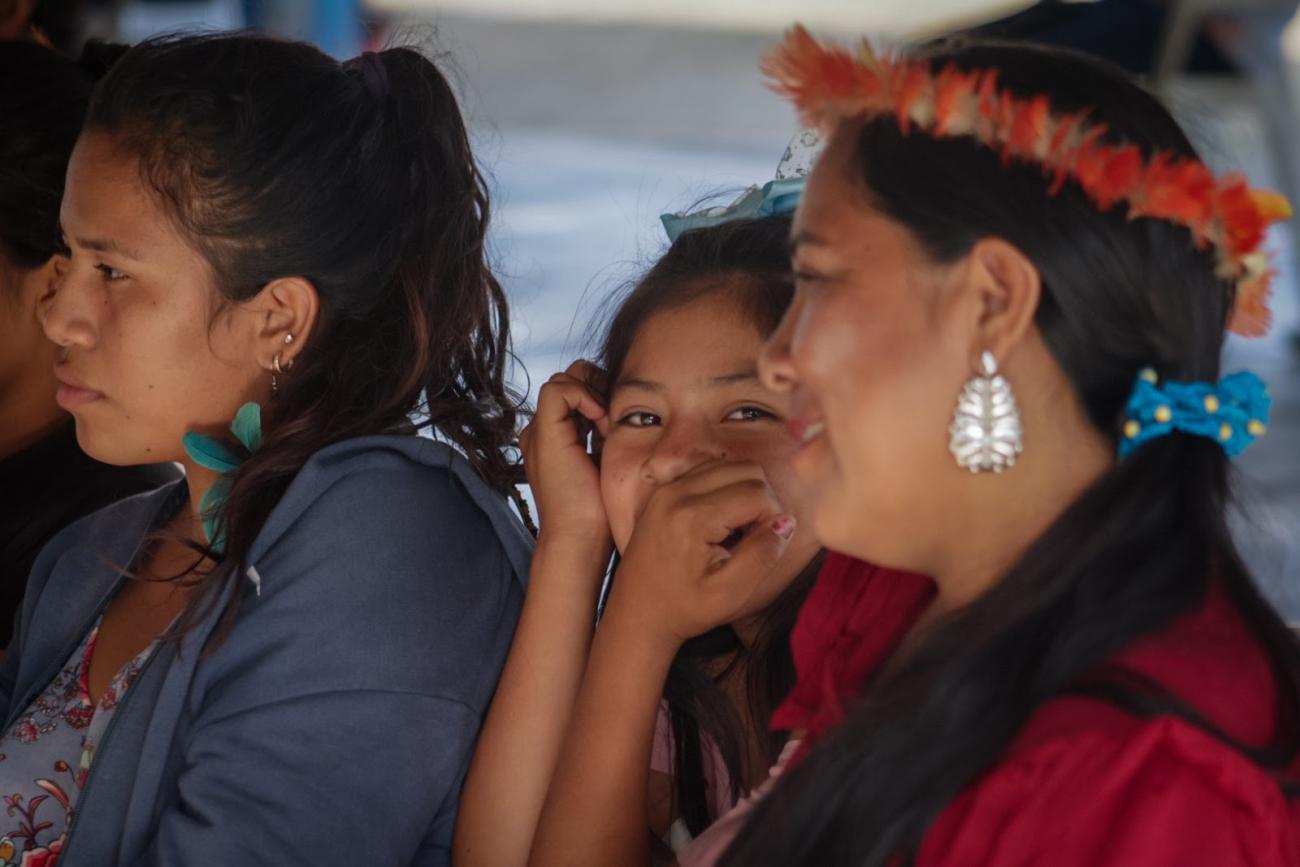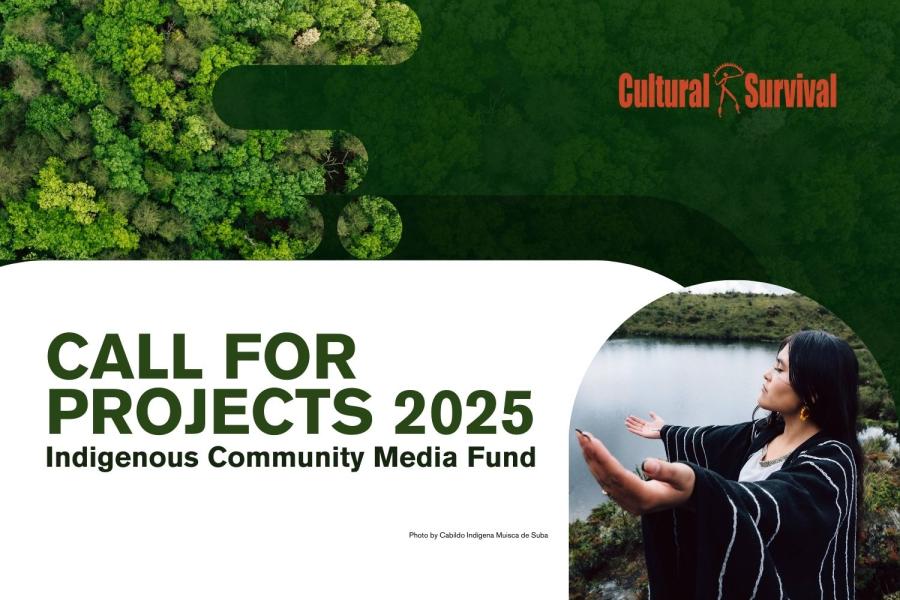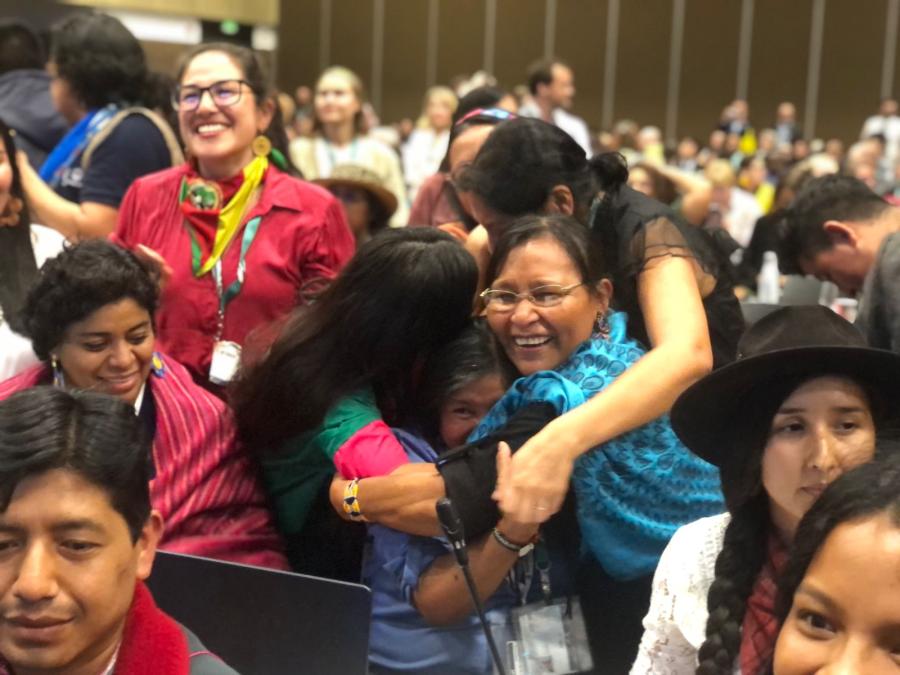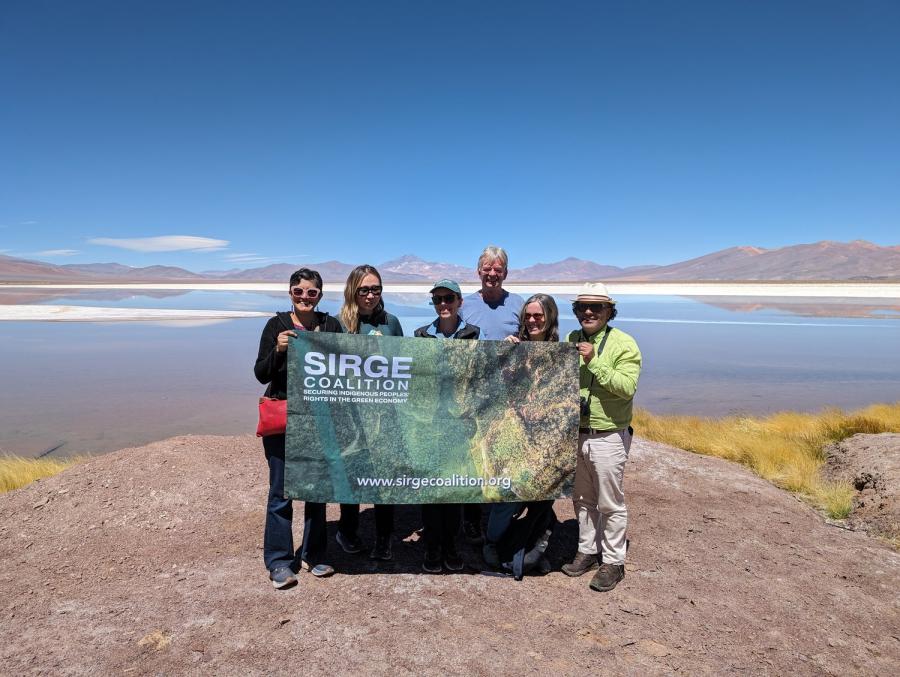
By Carmem Cazaubon (CS Capacity Building Program Intern)
Art is an essential expression of every culture. Through paintings, ceramics, graphics, music, and other forms, communities express their stories, worldviews, and spiritualism in a celebration of their traditions. By learning a craft, one can connect deeply with their ancestors and culture while developing skills that help to build a better future for themselves and their communities. The following Cultural Survival Indigenous Youth Fellows developed projects that strengthen the artistic expression of the youth in their local communities.
Youth taking part in the multiple traditional workshops offered at Raposa do Sol.
Carla Jarraira (Macuxi) from Brazil
The Raposa ethno-region is made up of 52 Indigenous communities and a population of approximately 6,600, most of whom are Macuxi Peoples. Carla Jarraira (Macuxi) has been part of the local Indigenous movement since she was 14, working mostly with youth. She is currently a law student and is part of the Youth for Our Planet Initiative, having built partnerships with regional leaders and in academic and governmental spheres. Her project, “Komannîto`eseru,” (Macuxi culture) aims to address a series of issues faced by her community stemming from the illegal gold mining near Raposa territory, which has created major environmental and social problems including increasing conflicts between communities and rising rates of alcohol and substance abuse, prostitution, suicide, and depression. Mining is promoted as an easy—and often the only—option for youth to earn money for themselves and their families, which Carla is determined to prove wrong.
Carla’s project offered hands-on workshops to youth in ceramics, graphic arts, Indigenous music, fabric printing, crafting, and entrepreneurship with the guidance of local artisans and knowledge holders. In between workshop sessions, festive cultural nights, lectures, and debates were held. One of the central themes of the lectures was Indigenous Women's Rights and Leadership, where violence against women and its prevention were discussed. The event was a success and contributed to the social, cultural, spiritual, and political development of those in attendance. Networks were formed and youth gained skills in arts and crafts with an entrepreneurial perspective. Over 300 Indigenous youth from the Macuxi, Wapichana, Taurepang, Wai Wai, and Patamona Peoples attended the workshops, which, for a closing ceremony, featured an Indigenous market for the students to display their creations.
Awareness campaign about violence against Indigenous Women
“When you're born in an Indigenous community, you grow up with the principle of collectivity. We are shaped to be leaders. We learn that the foundations of the Indigenous movement are territory, health, and education. Through a lot of fighting, today our territory is demarcated. The Komannîto`eseru (Macuxi culture) project supports our second battle, which is for our mother tongue and our culture,” Carla says.
Vases, pots, animals, and trees were some of the first ceramic objects produced by the children.
Santos Melchor Noh Pech (Maya) and the Maya Ceramics Tradition in Mexico
Xcalakdzonot is an Indigenous community of about 800 inhabitants in the municipality of Chankóm, Yucatán, México. Yucatan Maya is the traditional language, and most of the people dedicate themselves to the production of wood carvings, machine embroidery, and hammocks. Santos Melchor Noh Pech (Maya) is one of the members of this community. Holding a degree in Mayan Culture and Linguistics, he works locally supporting and promoting traditional Mayan culture and language through educational projects. In his studies, Santos came to appreciate the importance of ceramics for traditional Mayan culture, both in ceremonies and in daily life. He also realized that at present, only a handful of families in the whole province of Yucatán were maintaining the knowledge of such traditional artisan practices as clay handling and pottery making. With the intention of revaluing and recovering this practice, Santos launched his project, “Ka’ kuxtal” (Revival).
With the support of Domingo Cocom, a traditional potter, Santos organized 12 workshops for a group of around 20 local children between the ages of 10-15. The sessions mixed theory and practice, teaching about the history of Maya pottery, its multiple symbolisms and techniques, and going through all the practical stages of pottery design and production. Santos explains, “From the beginning, the children were excited to get the materials, handle the clay, and start making their pieces. Many discovered they were very skilled and made use of their imagination. The initial orientation was open to producing whatever came to mind, and some made vases, animals, trees, benches...little by little they learned the traditional techniques and started making more traditional pieces. The project has a great social, educational, and cultural impact on the community as it not only impacts the participants’ individual skills, but also their personal lives as a new tool for their future and their families.”
Taitas and mamitas share their Traditional Knowledge of basket weaving
Leydi Johana Jamioy Jamioy (Kamëntŝá) and the Kamëntŝá Weavers in Colombia
The cultural richness of the Kamëntŝá Indigenous community in the Sibundoy Valley, Department of Putumayo, Colombia, is expressed by their way of thought, lifestyle, and creations. One of their most original artforms is basket weaving, a complex and rigorous process that demonstrates a great level of skill and creativity. This traditional craft embraces different techniques, aesthetics, values, and narratives that tell the story of the Kamëntŝá Peoples. However, it is a tradition on the verge of extinction. Over time, basket weaving has become less and less known by the younger generations. It has also been impacted by the scarcity of raw materials and low market prices that undervalue the product.
With the intention of recovering and strengthening this weaving culture, a group of Kamëntŝá Indigenous women came together under the name of Kamëntŝá Weavers. With the guidance of local taitas and mamitas (Elder Traditional Knowledge holders), the collective organized a series of activities around the art of weaving, including researching and collecting raw materials, planning designs, discussing symbolism, and organizing a final exposition showcasing the results. Children, women, youth, community leaders, traditional and spiritual authorities, and general members of the Kamëntŝá community participated. In addition to creating and consolidating networks of collaboration and affection, the activities contributed to the strengthening of Kamëntŝá values, customs, and traditions, activating a legacy of their ancestors. Leydi Joanna Jamioy Jamioy, a Cultural Survival Youth Fellow and one of the members of the Kamëntŝá Weavers collective, says she believes “this knowledge sharing has allowed us to weave from our own thoughts, to heal, to share, and to find ourselves in the process.”



